Band saw
Einhell TC-SB 200/1
Published on: February 5, 2021
Reading time: 9 minutes
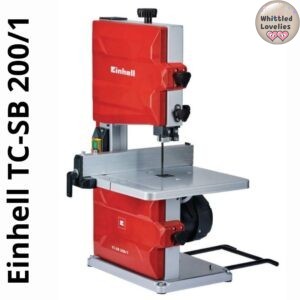
My experience
When I decided to take up woodcarving seriously, I naively thought that since I live in the countryside, finding wood would certainly not be a problem. I live just a step away from the woods, abandoned wood is guaranteed and I wasn’t wrong about that. Too bad I hadn’t reckoned with what kind of wood I was dealing with!
My forests are rich in oak and beech, two trees that are not exactly the best for the small objects I like to carve. Fortunately, with a lot of walking I can reach some rare birches, pines and firs, enough poplars and a few scattered basswood trees.
Starting with your own piece of wood, with the bark, that you cut yourself from the forest is an effort but a completely different emotion from receiving pre-prepared blocks ordered online. I find it beautiful and ecological. I love to set off with my rucksack, take advantage of a nice walk and choose the pieces I like, this is definitely the shopping centre I love the most! 😍
I’m sorry to say that I’m making people’s mouths water if they can’t easily find wood, but I’ll comfort you by saying that the wood you buy is perfectly stable. Dried properly to the right point, taken from the best pieces, it normally does not contain knots and arrives already perfectly squared ready for use.
Those who choose the difficult way should know that once the piece has been cut, it should be dried so that it does not split. Then find a way to cut it into blocks to make it easier to carve the figure. And here we are, after a huge effort with the hand saw, I opted for an electric saw.
The research
Doing a bit of research online I discovered that there are many different types of electric saws so the choice is hard, but if you break them down into macro categories, the most common are:
- chainsaw. The classic chainsaw. Whether powered or electric, it’s definitely not the kind of saw you can use at home or in a small workshop. It is very useful for cutting trees in the woods, cutting a log into smaller pieces or, for the more talented, for carving. Certainly not useful for making precise 5/10 cm blocks of wood!
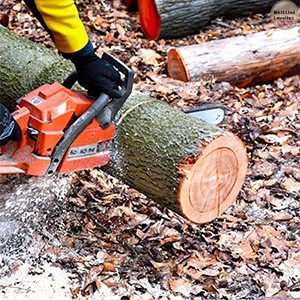
- circular saw or miter saw. I had thought about this one, in the table version. Not too bulky, useful for cutting straight lines or oblique cuts with precision, the only downside is that you can’t do freehand cutting.
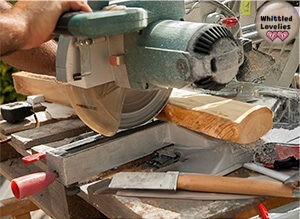
- reciprocating saw. Interesting and versatile saw. The operating position is decidedly uncomfortable. Imagine you want to cut your wood with precision while holding a giant electric carving turkey knife… ummm 🤔 better not! 😂
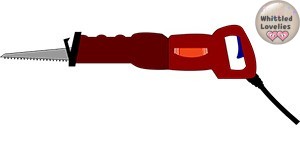
- jig saw. Good for precise, more linear cuts again. You can also make more freehand cuts but with the aid of a clamp and it’s still not very handy. Best if used with its own wood following guides, but this type of saw is ideal for cutting boards, not small rectangular blocks.
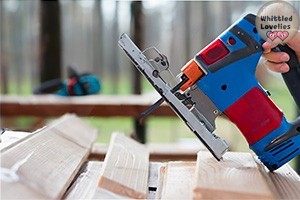
- band saw. At the end of the research it was the one that convinced me the most.
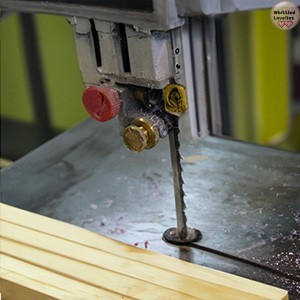
Having a studio where you can have all these tools at your disposal is certainly the dream of all woodworking enthusiasts. However, when it comes to money and space, it is essential to come to a decision that saves as much as possible. Always bearing in mind what you want to use it for.
So I bought the Einhell TC-SB 200/1. Why? To be honest, it was the cheapest one at the time. Since I’m a beginner, I preferred to invest as little as possible. I wanted to see how I got on with using it, and then decide to buy a serious one in the future or go for a different type.
The review
Using the style of the professionals, I will first give you a round-up of the technical specifications. In this way, the most obvious conclusions and the most salient information can jump out at you.
Technical specifications
Tension:
220-240 V | 50 Hz
Max motor power (S2 | S2):
250 W | 15 min
No-load speed:
1400 min^-1
Excursion:
200 mm
Band saw blade:
1400 mm x 7 mm
Number of teeth:
6 / 25,4 mm
Max cutting height at 45°:
45 mm
Max cutting height at 90°:
80 mm
Workbench dimensions:
305 mm x 305 mm
Inclination plane:
-2 ° – 45 °
Suction connection diameter:
36 mm
Logistical data
Length:
420 mm
Width:
285 mm
Height:
720 mm
Single package gross weight:
19,5 kg
Product weight:
17,35 kg
Einhell Germany AG is a German manufacturer of power tools and garden equipment based in Landau an der Isar in Germany. Although the design is made in Germany, as is now common, the machinery is manufactured in China. The band saw in question looks very heavy at first glance, while as we can see it weighs just under 20 kilos and is made of plastic and metal. On closer inspection you soon realise that the materials are not of excellent quality and the assembly is not very well done. I don’t think you can expect much when you’re talking about a machine that sells for about 200 euros less than professional ones.
The first thing I would ask you to bear in mind is that this is a tool designed for hobby use. So it is also useless to have infinite power to cut wood that is no more than 8 cm high! All of its features are suitable exclusively for this use. I don’t want to diminish a machine that I think does its job very well.
Once the package is opened we find ourselves in front of a partially assembled machine body. Following the unfortunately ridiculous instructions, the rubber feet and a metal slide must be added, which will guarantee further stability and anti-crushing. Finally, the worktop must be mounted and the position of the band saw blade checked, which is already included and installed in its seat. All this takes about half an hour of work.
Tips
For extra safety and to be able to make really precise cuts, I recommend that you find a place on the workbench where you can work with the teeth of the blade facing you. In this way the various adjustment knobs are also placed in the most practical way to be used.
Considering that many people, like me, have a small studio space in their homes, I would strongly advise against using a band saw in the home! Not because of the noise, which is much lower than you might imagine, but because it shoots wood dust everywhere!
At the bottom of the back underneath the motor there is a coupling to which I strongly recommend fitting the hose from a hoover or ash vacuum cleaner. This will absorb some of the sawdust that forms at the bottom of the saw, which is a help, but doesn’t solve anything at the top. It is also good to put in place that it is better to vacuum after each use as it fills up very easily. Having too much sawdust inside the panels leads to malfunctions that are best avoided.
Once all the components are in place, a very useful metal bar can be fixed to the worktop. This acts as a ruler to help us be more precise in straight cuts. The wood can be rested on it by pushing it towards the blade using a plastic piece pusher which will guarantee excellent safety against possible cuts to the hands.
The first thing to do is to check, as I mentioned before, the position of the band, it must be more or less in the centre of the pulley. To modify this position you have to act on a knob that remains on the back of the band saw that will try to correct the inclination of the wheel on which the blade runs, but always after having put the band under tension. This was the most difficult thing for me, often the blade comes out of place and you have to start all over again .
The machine has two plastic doors to which safety sensors are attached. Always check that these panels are securely closed or you’ll go crazy trying to figure out why your saw won’t turn on! Having completed all the preparation, we are finally ready to cut!
The worktop gives you the possibility to work from 0 to 45° so you can make precise straight or oblique cuts. Imagine, for example, that you want to cut pieces to make up the frame of a painting, a job that only takes a few minutes. In the same way, it is also very easy to make freehand cuts. Of course, you should always bear in mind that the saw has a very efficient, fast-moving blade that allows no distractions. So to proceed with freehand drawing, simply follow the contour, keeping to the outside by about 3/4 millimetres, always paying close attention to your hands and having the blade very well stretched. And that’s it!
Small problem solving
An important detail is that the maximum manageable height is only 8 cm (at 90°) in this type of band saw. A blade guard raises and lowers to provide extra safety against accidental finger impact with the blade. It has to be said that, also to help the stability of the blade, it is always better to set it very close to the maximum height of what we are cutting, but higher than 8 cm it doesn’t go!
There are ways around this, for example I managed to turn a piece of log about 20 cm in diameter into a rectangle. First of all it must be well cleaned from the bark as it would jump from all sides and could also block the blade. If you have an axe to reduce it a little you can do the job without any problems, otherwise you can try to start cutting it into small strips with a saw, it takes time but you can do it!
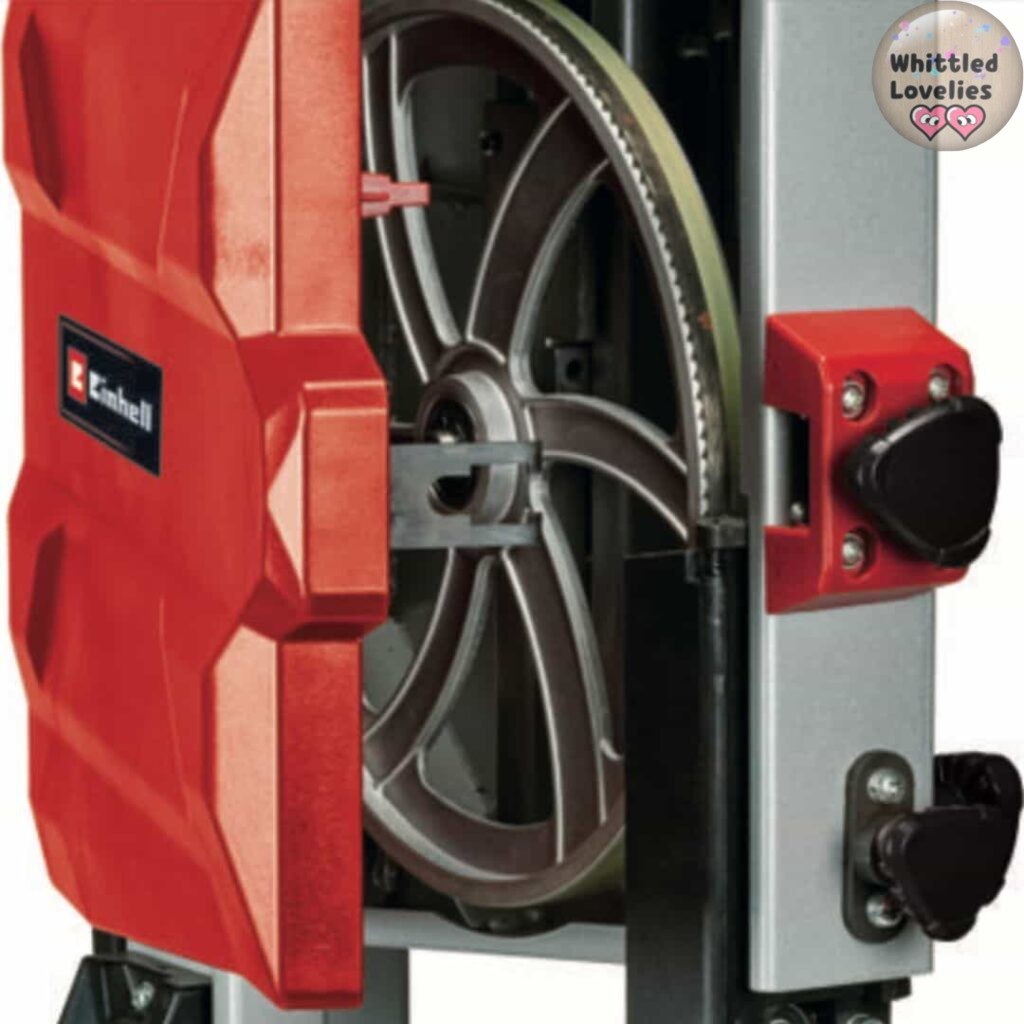
If the blade goes completely out of place the machine will stop on its own for safety, but if you hear that it becomes much louder beware that the belt has probably moved and is eating the metal or plastic of the guides. This is not only annoying to the ears, but in a few moments it will irreparably damage the blade. Changing the tape is not a terrible job and the replacement band saw blades are not overpriced, you can usually find them around 15 dollars, so don’t worry, but used correctly, in about two months of almost daily work I don’t notice any worsening in the cut.
Conclusions
In short, my conclusion is that for the price, this is a really good bandsaw to try.
- I recommend it to those who buy the blocks already squared because they can cut them to size in a matter of seconds. In this way you can also recover pieces that would be considered waste, but which at a closer look are an invaluable treasure when they can be used to make smaller accessories to the one you are carving!
- I recommend it to those who always have little free time. By cutting out the figure, less time is lost in trimming, a process that many find tedious, and therefore more time is gained to devote to the details and the actual artistic carving.
- And finally, I recommend it to those who have the possibility of finding the wood from friends, from the forest, from public green operators, etc.. By preparing your own parallelepipeds, you can cut them to size to suit your project and avoid waste and, above all, considering the price of carving wood, you will soon see the cost of the saw itself amortised and it will last a long time!
If, on the other hand, you normally need to cut rather thin woods, but more like cutting complicated shapes, ornaments or inlays inside the figure what you need is a scroll saw. In this article I tell you about my experience with the Scheppach DECO SL, see you soon!
This is an article written by a human for humans!
All articles in the blog are written by me. No contributors, no people paid to write content for me.
Posts written by guests or friends of the blog are marked under the title with the words “guest post.” These are friendly collaborations, contributions to the carving community.
No AI (artificial intelligence) support is employed in the writing of blog articles, and all content is made with the intent to please humans, not search engines.
Do you like my content?
Maybe you can consider a donation in support of the blog!

Click on the button or on the link Ko-fi to access a secure payment method and confidently offer me coffee or whatever you want!
From time to time, in articles, you will find words underlined like this, or buttons with the symbol 🛒. These are links that help deepening, or affiliate links.
If you are interested in a product and buy it suggested by me, again at no extra cost to you, you can help me cover the costs of the blog. It would allow me to be able to give you this and much more in the future, always leaving the content totally free.
